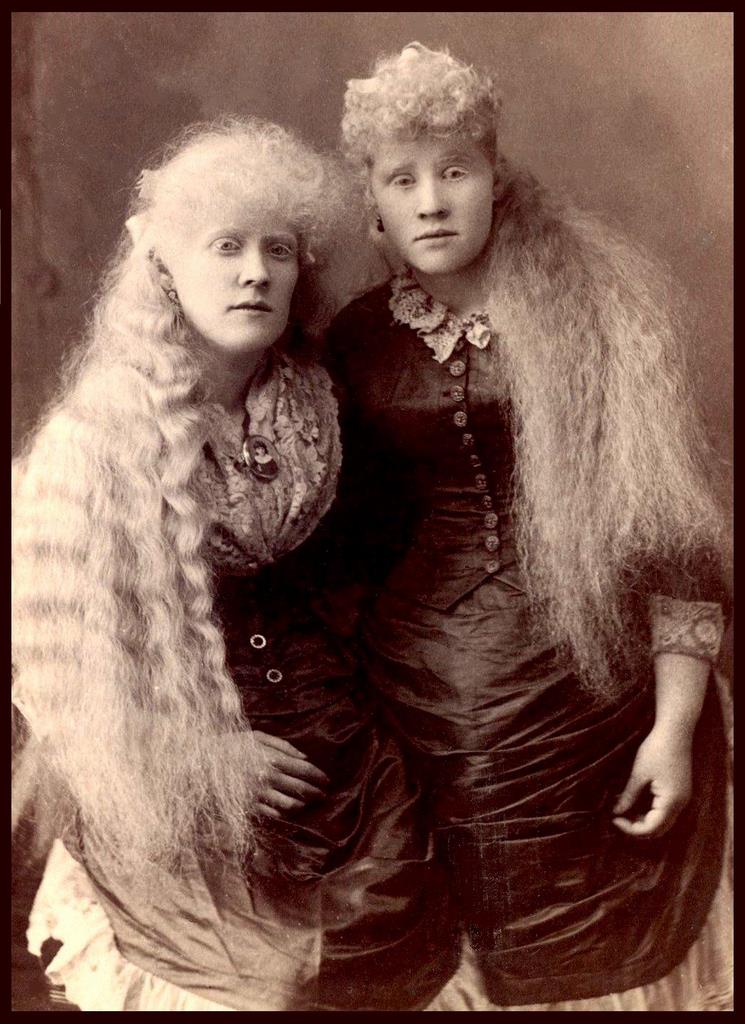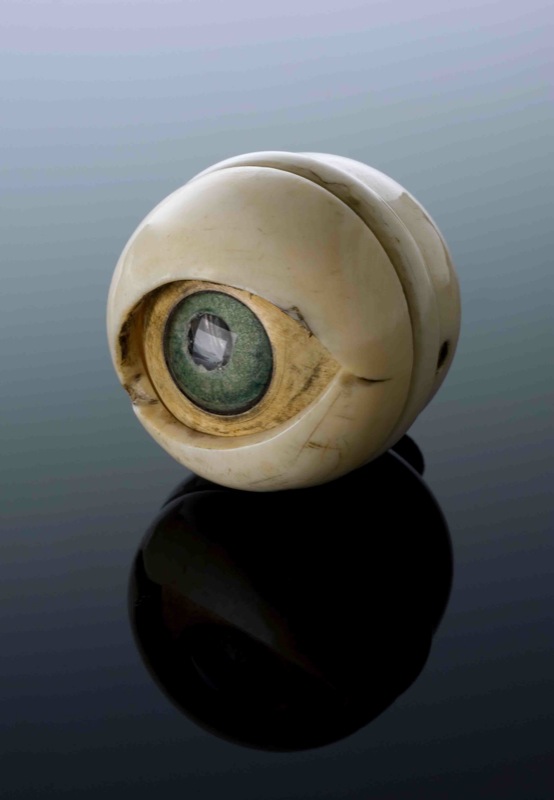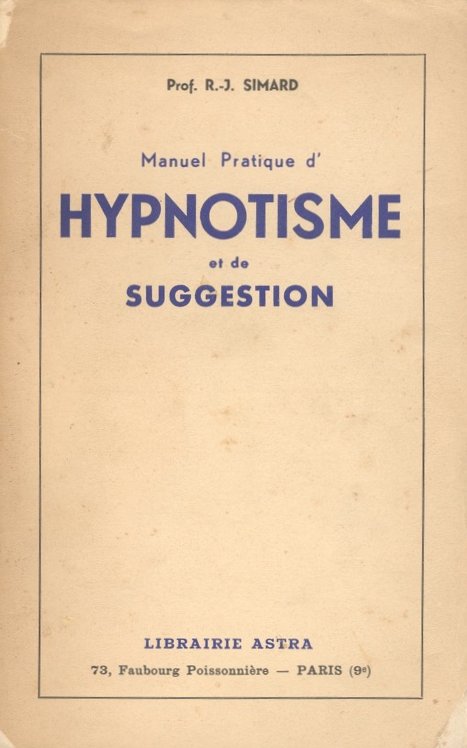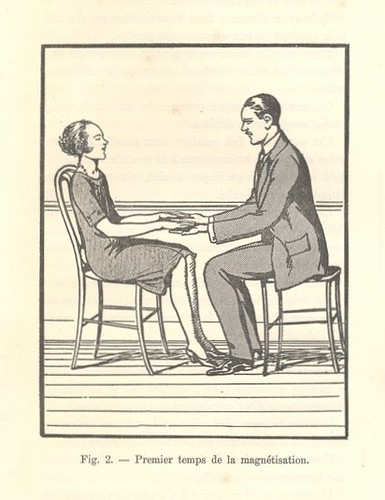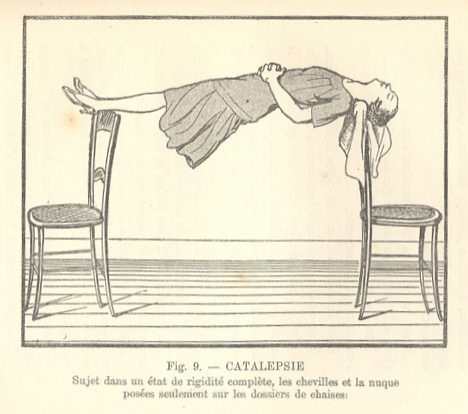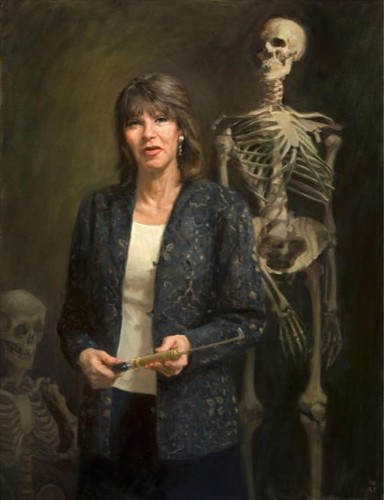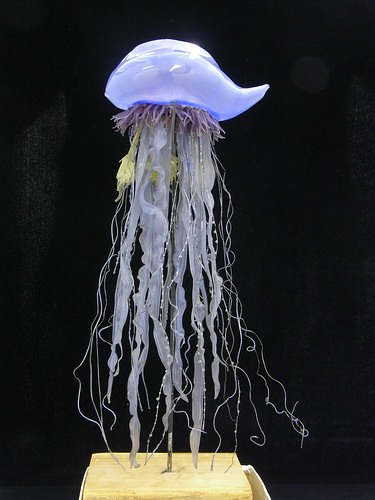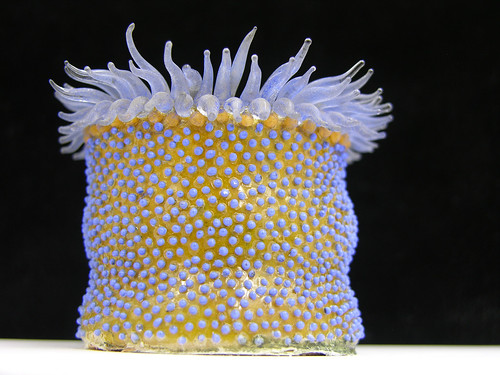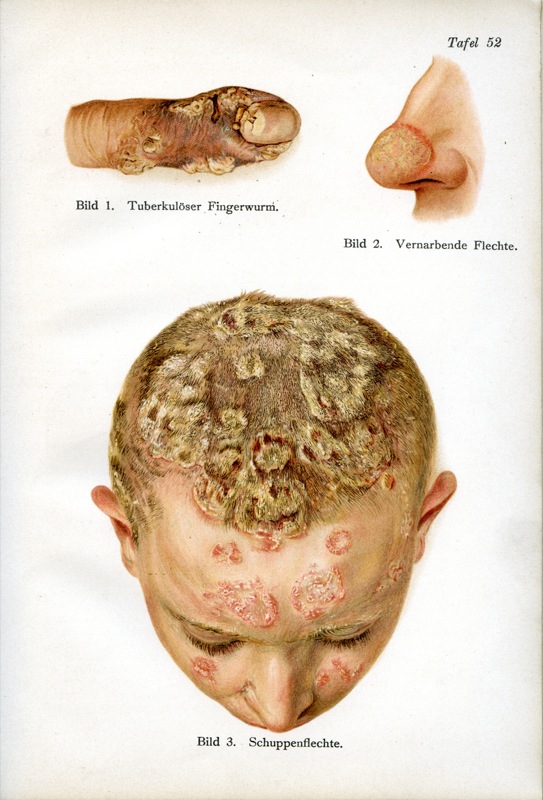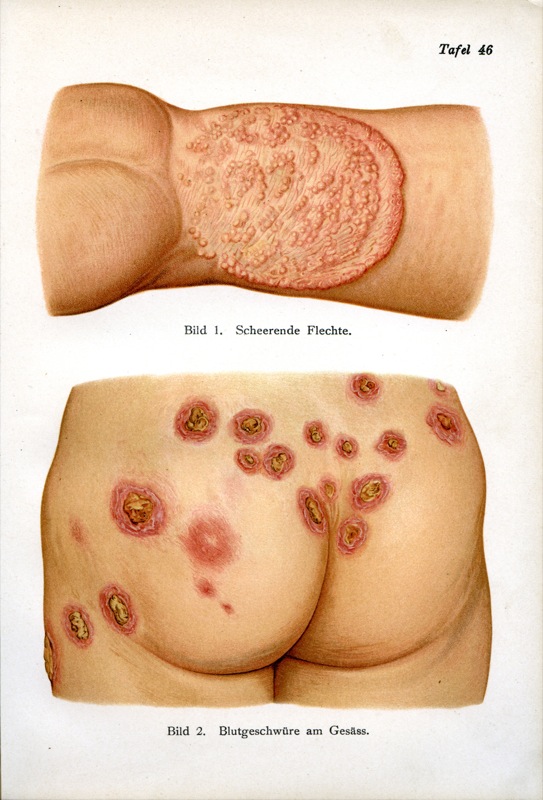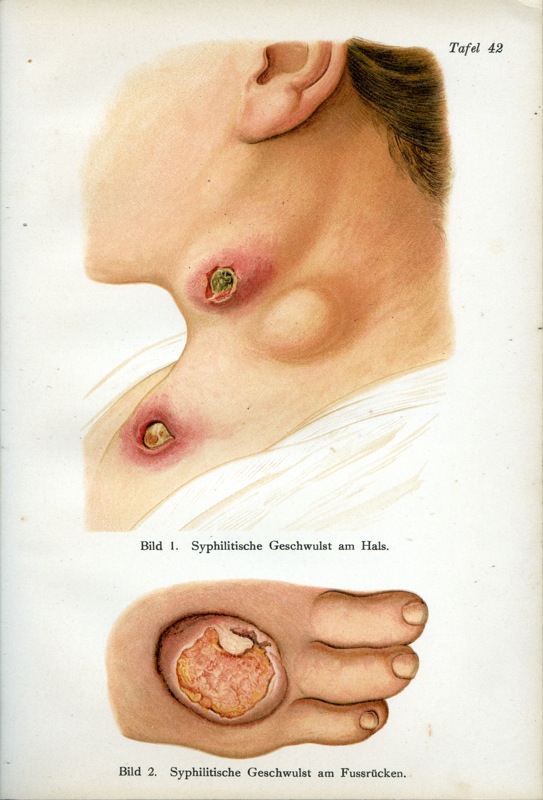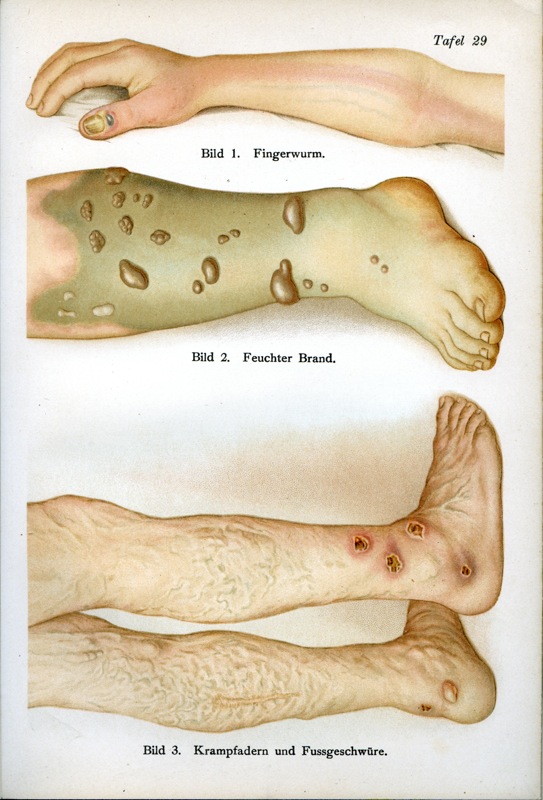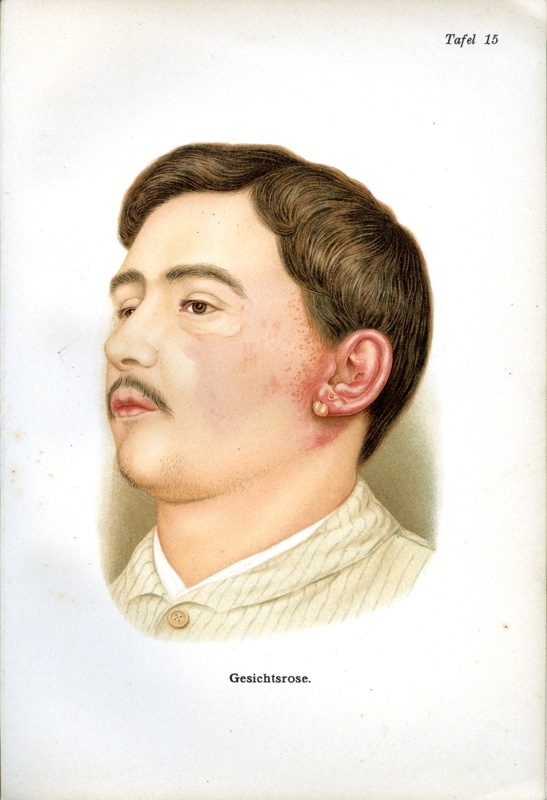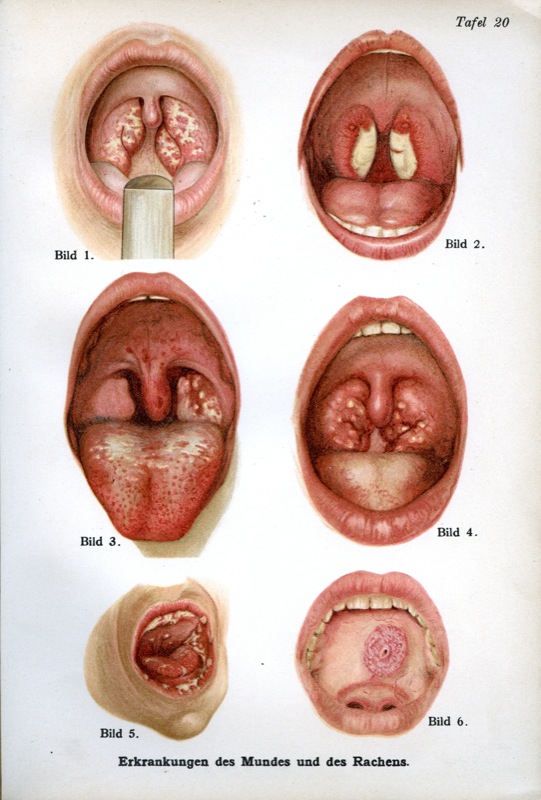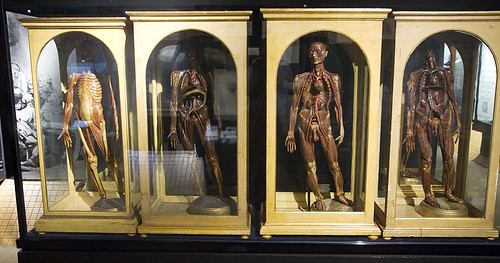
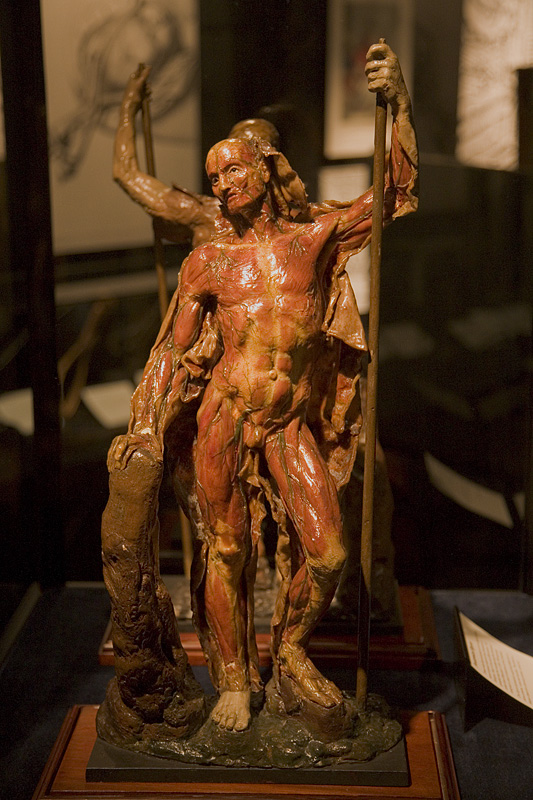





Who knew you could visit a 18th Century miniature wax anatomical Venus (images 3-5) in
London? Or, how about anatomical waxes possibly rendered by 18th Century anatomist and artist
Anna Morandi Manzolini (image 2)? Or, perhaps an anatomical model of an eye prepared for the Duke of Tuscany in 1674, presented magnificently in its original velvet box (image 6)?
"The Science and Art of Medicine" galleries of London's
Science Museum has all this and more, thanks to the obsessive collecting of all things medicine and mankind by 19th Century pharmaceutical magnate
Henry Wellcome (and, of course, the good sense of the Science Museum to accept objects "on permanent loan" from the
Wellcome Trust in 1976). The dark , somber galleries are tucked into a quiet nook of the bustling-with-children Science Museum, and the narrative detailed within is engaging and thought-provoking, cutting a broad swath through the art, history, science, and cultures of medicine from pre-history to the present. The text is illustrated with dozens of extraordinary artifacts--such as the ones you see above--from Wellcome's collection. Yet more noteworthy objects from Wellcome's collection can be seen in the eponymous
Wellcome Collection.
If you are interested in knowing more about Henry Wellcome and his collection, I cannot recommend more highly the wonderful (and wonderfully illustrated) book
Medicine Man: The Forgotten Museum of Henry Wellcome. You might also want to check out the Quay Brothers' short film
The Phantom Museum: Random Forays Into the Vaults of Sir Henry Wellcome's Medical Collection (2003), found on the DVD collection
"Phantom Museums: The Short Films of the Quay Brothers
." For the short, which accompanied the
Medicine Man exhibition at the British Museum (and plays on an infinite loop in the
Wellcome Collection's "Medicine Man" gallery), The Brothers take us on an evocative tour of an imaginary Wellcome archive, peopled with mysteriously animated prosthetics, coupling erotic figurines, and swooning anatomical mannequins. Lovely stuff, and a great introduction to the vast wonder that is the collection of Henry Wellcome, even in its current diminished incarnation. (Note: if you live in the NYC area, feel free to stop by the
Morbid Anatomy Library for a complementary viewing.)
You can view a full collection of images from my visit to the museum (and find out more about the objects pictured above)
here. Also, as I
mentioned in yesterday's post, these artifacts (and many more!) will be accessible on the
Brought to Life website being launched by the Science Museum in March. Hopefully, this will bring more exposure to this world-class medical collection. You can find out more about the museum and its gallery
here.
Special thanks to
Jim Edmonson of the
Dittrick Medical History Center for urging me to visit the museum! It is definitely one of my new favorite museum exhibits.


